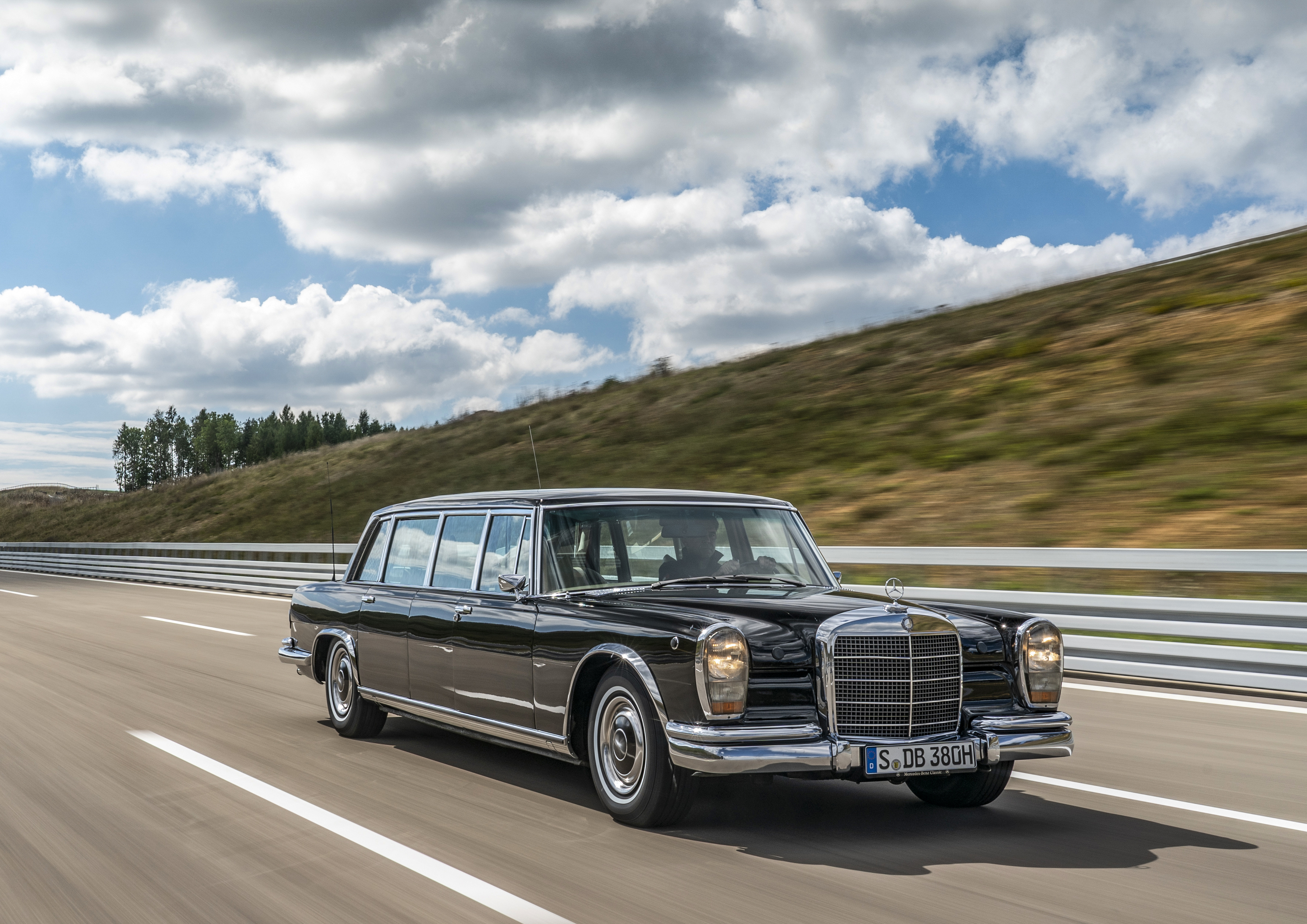The International Concours of Elegance in St. Moritz is an annual event that celebrates the beauty and elegance of classic cars. It takes place in the Swiss Alpine resort of St. Moritz, and it features a selection of the world’s most beautiful and rare automobiles.
Mercedes-Benz is one of the most prestigious automakers in the world, and it has a long and rich history of producing some of the most beautiful and technologically advanced cars of all time. The Mercedes-Benz 600 and 300 SLS are two classic Mercedes-Benz models that have been highly prized by collectors and enthusiasts for many years.

“The ‘Grand Mercedes’ 600 – the exclusive vehicle of great prestige”: With this headline, the Mercedes-Benz press release for the premiere in September 1963 at the International Motor Show (IAA) in Frankfurt am Main positioned the Mercedes-Benz 600 among the leaders in the automotive industry. Some of its highlights: the first V8 engine in a Mercedes-Benz car, performance on a par with a sports car, many hydraulically-controlled convenience features for seat adjustment, opening and closing of doors, windows and boot lid. Added to this were air suspension, power steering and a central locking system as well as an electronically-controlled heating and ventilation system. All things considered, the equipment was unique at the time and was considered state-of-the-art during that period. Internally known as the W 100, the luxury saloon held its position as the international benchmark of the top automotive category for almost two decades. During the 17-year construction period, 2,677 examples were built, 487 as Pullman versions. The V8 engine with a displacement of 6.3 litres produced 184 kW (250 hp). Buyers from all over the world opted for the “600”: Royal highnesses, heads of state and equally outstanding personalities from the worlds of business and show business.
The Mercedes-Benz 600 was a luxurious limousine that was produced from 1963 to 1981. It was the company’s flagship model and featured a range of advanced features, including air suspension, power windows, and a hydraulic system that powered everything from the brakes to the seats.

At the Geneva Motor Show in March 1957, Mercedes-Benz unveiled the 300 SL Roadster (W 198) as the successor to the 300 SL “Gullwing” Coupé of the same model series, which had made its debut in 1954. On a technical level, the open-top sports car was very much like the coupé, although the modified roll cage now allowed the installation of conventionally hinged doors. These were necessary for open-top driving and were more convenient when getting in and out. The chassis had also been evolved further: The single-joint swing axle with a lowered pivot point was used instead of the classic two-joint design, and the 300 SL Roadster had a compensating spring for the first time. From autumn 1958 onwards, the Roadster was also available on request with a detachable hardtop. It was from the standard 300 SL Roadster that Mercedes-Benz engineers developed the 300 SLS racing variant with which Paul O’Shea won Category D of the American Sports Car Championship in 1957. This completed the circle, as the 300 SL was based on the racing car of the same name (W 194), which was used very successfully in motorsport in the 1952 season. In 1961 the 300 SL Roadster was provided with disc brakes, and in 1962 with a cast-aluminium crankcase. Production of the sports car continued until 1963. A total of 1,858 examples of the highly exclusive sports car were built over seven years. Today it is one of the most sought-after classics.
The Mercedes-Benz 300 SLS was a racing car that was based on the legendary 300 SL. It was produced in the 1950s and was a highly successful racer, winning many races and championships.
Both of these classic Mercedes-Benz models are highly prized by collectors and enthusiasts, and it is not surprising that they would be featured at an event like the International Concours of Elegance in St. Moritz.




